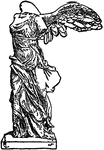Clipart tagged: ‘victory’
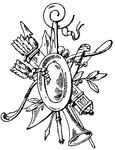
Music Trophy Clock Panel
This music trophy clock panel was designed during the French Renaissance. Trophies were tokens of victory…

Trophy Clock Panel
This trophy clock panel was designed during the French Renaissance. Trophies were tokens of victory…
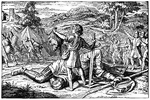
David Holds the Head of the Slain Goliath
"Then David ran, and stood over the Philistine, and took his sword, and drew it out of the sheath thereof,…
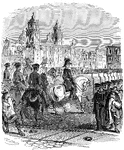
General Scott's Entry into Mexico City
General Scott's entry into Mexico City following victory in the attack on Chapultepec.
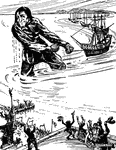
Gulliver in Victory
Gulliver takes the enemy's fleet, the Blefuscudians, and victoriously drags them into the royal port…
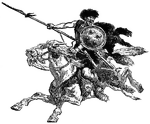
Hun Warrior on Horseback in Battle
Illustration of a Hun warrior riding on horseback, his mouth open as if to scream. The warrior has a…
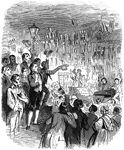
Jackson's Reception by the Citizens of New Orleans
Andrew Jackson's reception by the citizens of New Orleans following his defeat of the British in the…

Medal of Smyrna
A medal of Smyrna depicting Ceres, the goddess of plenty. The reverse side of the medal shows Jupiter…
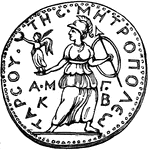
Medal of Tarsus
A medal of Tarsus which suggest that Minerva, the goddess of arts and sciences, was revered there. In…
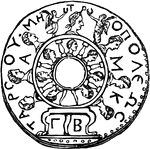
Medal with Heads
A medal containing two circles of heads, each having seven, male and female alike. The heads of the…

A Napoleonic Medal
"A medal prepared by Napoleon to be issued at London in honor of his expected triumph. It represents…
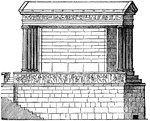
Temple of Nike Apteros
"The first public monuments that arose after the Persian wars were erected under the auspices of Cimon,…

Pompeii Graffiti from the House of Dioscuri - Gladiator Holding Palm Leaf
A drawing of one section of the graffiti found on the house of Dioscuri in Pompeii. A gladiator descends…

Victory Coin over Pyrrhus
Roman coin struck to commemorate the victory over Pyrrhus and his elephants.
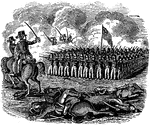
They Conquer Who Endure
"In close array, this firm united band / Guarded on every point will boldly stand; / Their foes attack…

Tippecanoe Battle Ground in 1860
The Battle of Tippecanoe was fought in 1811 between United States forces led by Governor William Henry…
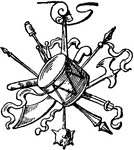
Chased Metal Dish Trophy
This chased metal dish trophy was designed during the Renaissance. Trophies were tokens of victory that…
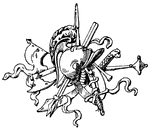
Chased Metal Dish Trophy
This chased metal dish trophy was designed during the Renaissance. Trophies were tokens of victory that…

Chased Metal Dish Trophy
This chased metal dish trophy during the Renaissance. Trophies were tokens of victory that were used…
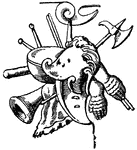
Chased Metal Armor Dish Trophy
This chased metal armor dish trophy during the Renaissance. Trophies were tokens of victory that were…
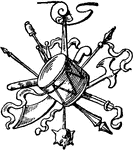
Chased Metal Art Trophy
This chased metal art trophy during the Renaissance. Trophies were tokens of victory that were used…
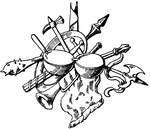
Chased Metal Tool Trophy
This chased metal tool trophy was designed during the Renaissance. Trophies were tokens of victory that…

The Victors of Salamis by Fernand Cormon
Illustration of a painting of the ancient Greeks returning victorious from the Battle of Salamis against…

Victory
A representation of Victory, inscribing on a shield the triumph of the Romans; at the same time, she…
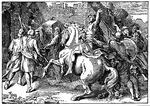
The Walls of Jericho Fall and the Israelites Enter the Promised Land
"So the people shouted, and the priests blew the trumpets; and it came to pass, when the people heard…

James Wolfe
A British Army officer known for his victory over the French in Canada during the early 18th century.

